A School Where Inquiry Flourishes
Learning for Real: Teaching Content and Literacy Across the Curriculum
By Heidi Mills
(Heinemann, 2014 – Learn more)

Ever since I started teaching, I have been fascinated by the process of learning. When I grew up, the old-school didactic method of teaching did little to help students understand what they were learning, much less be able to apply it. We now know that we learn best when we are at the center of our own learning.
Heidi Mills’ book, Learning for Real: Teaching Content and Literacy Across the Curriculum, reminds us that “Tell me and I forget, show me and I remember, involve me and I understand.”
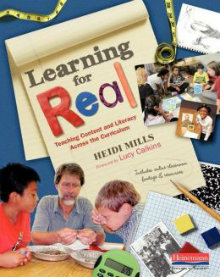
Learning through inquiry
Inquiry based learning is a process based on the questions generated from the interests, wonderings, perceptions and experiences of the learner. When students are invested in the learning process, the intrinsic rewards come from the answers to their inquiries. Using inquiry based teaching shows students how to learn as well as what might be worth learning. It sets them up to be life-long learners.
The book is rooted in the following precepts (xxiii-xxiv):
- Carefully observe the world using tools and strategies of the discipline
- Pose questions and investigate/solve problems from numerous perspectives
- Access primary and secondary sources in complementary ways
- Use the language of inquiry and discovery to learn and communicate new understanding
- Use reflection and self-evaluation to grow and change
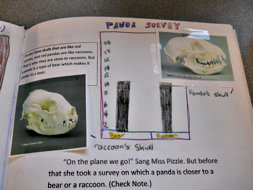
I have to admit, I felt a bit jealous as I read the book. I wanted to step into the classrooms, not as an observer but as a participant.
I wanted to be in Dori Gilbert’s kindergarten classroom studying ornithology (complete with an observatory full of birds’ nests, feathers, binoculars, and magnifying glasses).
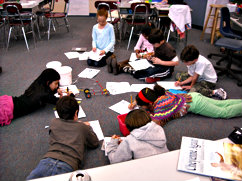
I wanted to watch the Live Webcams in Jenifer Barnes’ classroom, listening in on interviews; browse through the photo essays and memory books students created in Tim O’Keefe’s second grade classroom; read the magazine students created in Julie Waugh’s fourth and fifth grade classroom, and watch as students in all these rooms reflected on their learning and set realistic and authentic goals.
I wanted to take a trip to South Carolina and see this school in action.
A virtual visit to the Center
While I wasn’t able to schedule a quick trip to the Center for Inquiry, I was able to gain a virtual glimpse into some of the classrooms. Mills graciously offers online teaching resources such as video clips, narratives, a Unit of Study template, and several sample Units of Study.
For example, I became a passionate bystander in Tim O’Keefe’s class while he took a biography project a step further to include a social action component. His students created and published a song they wrote about Rosa Parks and sold CDs to raise money for a charity entitled Rwandan HUGS to purchase goats for Rwandan families.
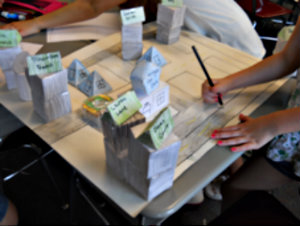
You will want to read the book again and again. I found that each time I reread a chapter (using the close reading strategies that I am teaching my fourth graders), I gained new insight into adapting and applying strategies and units into my curriculum.
Included in the book are:
• Chapter 1: A Cross-Content Area Vision of Balanced Literacy
• Chapter 2: Carefully Observe the World Using Tools and Strategies of the Discipline
• Chapter 3: Pose and Investigate Questions from Numerous Perspectives
• Chapter 4: Strategically Access Primary and Secondary Sources in Complementary Ways
• Chapter 5: Use the Language of Inquiry to Learn and Communicate New Understanding
• Chapter 6: Use Reflection and Self-Evaluation to Grow and Change
• Chapter 7: Planning for Inquiry
• Chapter 8: Across the Day and Year: Balancing Daily Planning with Long-Range Planning
• Chapter 9: In Their Own Words: Children Who Are Responsible, Joyful Learners
Growing through true inquiry
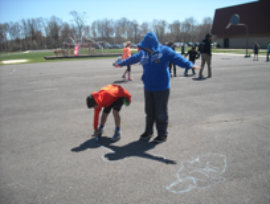
Dr. Mills’ book awakens the wonder in the teacher. She makes us wonder how we can integrate literacy into our daily teaching…wonder how quickly we can begin to restructure our lessons…wonder how we will contain our excitement…wonder where this book has been all our life!
Linda Biondi is a fourth grade teacher at Pond Road Middle School in Robbinsville, NJ, and a long-time Morning Meeting practitioner. She’s also the recipient of several educational grants, a Teacher Consultant with the National Writing Project and a participant on the NJ Department of Education Teacher Advisory Panel. Linda participates in ECET2 Celebrate Teaching which has posted an interview with her.

































